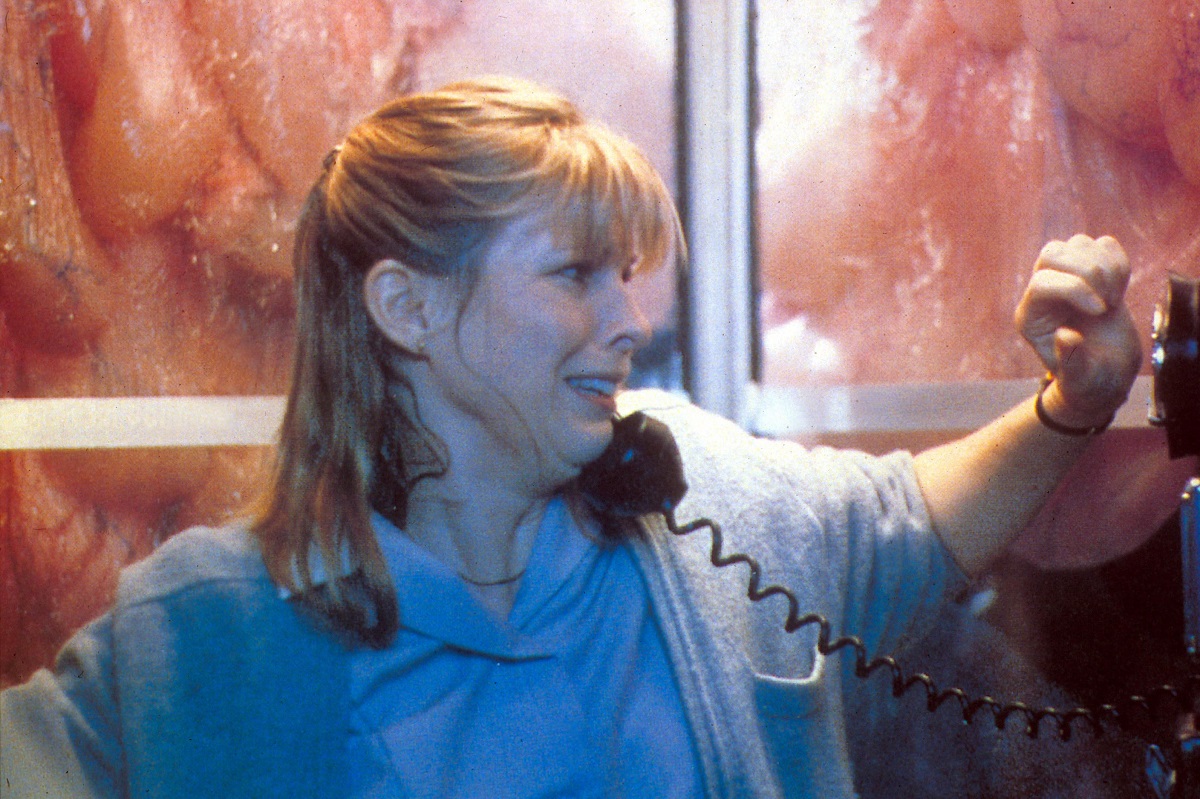Summer 2021
The Thing That Ate Abbeville (Kind Of)
Things that go bump in the Louisiana night
Published: May 28, 2021
Last Updated: June 1, 2023

Alamy Images
The Blob menaces scream queen Candy Clark.
In an attempt to bridge the gap from the drive-ins to the multiplexes, many movie studios reached back in their catalogs to find old terrors that could be translated to modern anxieties and scare audiences all over again. Kurt Neumann’s 1958 film The Fly was reimagined by David Cronenberg in 1986. John Carpenter turned 1951’s The Thing from Another World into The Thing in 1982, and thirty years after The Blob first chased Steve McQueen through a small rural town in Pennsylvania in 1958, director Chuck Russell unleashed a new generation of the gelatinous horror on the fictional city of Arborville, California. While the original Blob stood in for Cold War anxieties about a changing world—particularly the growing divide between youth culture and the expectations of adulthood—the 1988 Blob, instead, is interested in Reagan-era distrust of governmental power. The titular Blob is no longer sent from the stars as it was in Eisenhower’s time, but is instead the product of a failed experiment by the US government in its ceaseless arms race with the Soviet Union.
Of course, more than geopolitics would need to be updated for The Blob to hold its own in the modern era. Because of the runaway success of horror movies in the 1980s, movie studios found themselves in a cold war of their own. The box office issued a de facto mandate: each blockbuster must be gorier, gooier, and grosser than the one that came before it. In what is widely considered the golden age for practical effects, The Blob stands out as a standard-bearer for the Fangoria set.
While the original Blob creeps (“and leaps, and slides, and glides”—as the movie’s wildly catchy theme song goes) through miniature sets, demurely devouring its victims off-screen, the 1988 Blob is unabashed when it comes to eating on camera. The film’s iconic death scenes show—in all their gruesome detail—what it means to be consumed by the Blob. To that end, the special effects team constructed a large “Blob quilt”: layers of silk in varied hues coated with commercial-grade slime (somehow a real thing) and studded with pockets of methylcellulose—a food additive that ensures a thick, gelatinous texture in things like milkshakes and Impossible burgers. The slimy pile of fabric was then brought to life by a team of puppeteers to wreak oozing havoc upon Arborville.
We learn in the opening montage that the cozy postcard of a town has been gearing up for the impending arrival of the ski season. But, apart from the signs hanging in the shop windows welcoming tourists, not much of Arborville reads as “ski town.” Sure, not every ski town is full of chalets and pine trees, but they usually at least have mountains. It turns out, there is a very good reason you can’t see towering peaks in the distance: the scenes of downtown Arborville, along with most of the rest of the movie, was filmed just thirty minutes south of Lafayette in Abbeville, Louisiana, whose elevation of sixteen feet above sea level does not tend to attract many skiers to the area.
Many of the movie’s filming locations are easily recognized today despite thirty years having passed. The football game with the ominous view we see early on was filmed at Vermilion Catholic High School’s football field, which abuts Mt. Carmel Cemetery. When the government sets up a quarantine center for citizens exposed to the Blob, they usher them into the Vermilion Parish Courthouse. And in an echo to one of the most iconic scenes of the original movie, the Blob eats its way through the audience of a horror movie at Frank’s Theatre.
While people familiar with Abbeville can translate between Arborville and the real world as they watch, modern audiences are getting a chance to see what horror looks like when the state can play itself on screen. In the intervening years since The Blob was released, generous tax breaks have attracted an increasingly large number of movie productions to Louisiana, and the state’s evocative swamps and rich history make it a natural fit for horror. Victor Crowley haunts the Honey Island Swamp in the throwback, low-budget Hatchet series. Vampires, fae, and every other imaginable supernatural creature try to navigate the ironically named Bon Temps in the southern gothic soap opera True Blood. Even remakes are getting updated to Louisiana settings, like 2009’s reimagining of Night of the Demons. The rougarou cinematic universe can’t be far off.
A remake of The Blob is reportedly in the works yet again, and who knows—maybe this time the Blob will get to stalk through the streets of Abbeville, not for ski season, but to see what the Vermilion Parish Tourist Commission calls “The Most Cajun Place on Earth.” After all, it oozed right past the Abbeville Tourist Information Center last time it was there.
Gregory Theriot keeps a frozen piece of the Blob in a jar just in case.
